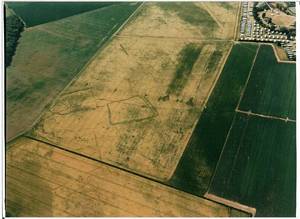As mentioned above, a number of SMRs have been able to make information available via the Internet, most by using the Archaeology Data Service as a gateway. However, the information is relatively limited, mostly consisting of the core text fields, and without the facility to link to other types of data, such as GIS and digital images. This situation is expected to change over the next two years, both with the development of more sophisticated search facilities at the ADS, and particularly with the increasing success of SMRs in accessing funding from bodies such as the Heritage Lottery Fund (HLF) and the New Opportunities Fund (NOF). These will allow SMRs to present their information in imaginative ways to a wider and more varied audience, for example using virtual reconstructions (Fig. 3). There will also be greater possibilities to link to other, related, information sources as methods of ensuring interoperability such as Z39.50 gain wider acceptance. These sources will include museums and record offices which are also making their collections available on-line (for example the Essex Record Office).

The first Lottery projects have begun to appear on-line, including Essex and Herefordshire, and more will soon follow. NOF projects are also accessible, either individually, such as the Essex part of the East of England Sense of Place project (EESOP), or through a regional gateway, such as EESOP will provide (Fig. 4 is a sample digitised photograph), or through the national portal, known as Enrich UK.

Nevertheless, it is salutary to note that only a tiny fraction of the
total number of SMRs in England have been able to apply for HLF
funding, and even fewer are involved in NOF projects. This does not,
on the whole, indicate a lack of interest in making SMR information
more widely available. Rather, it is a testament to the lack of
resources available to SMRs to support them in the long process of
preparing and submitting applications. For those SMRs that are now on
line, the main challenge appears to be how best to market their
information to the potentially wide variety of users. There is also a
more fundamental problem involved in that the information in SMRs was,
usually, first put together to meet the needs of a small number of
archaeologists involved in the planning process. It is another thing
entirely to take this information and make it available in an
intelligible form to a largely lay audience, to whom SMR terminology
and abbreviations are often meaningless.
© Internet Archaeology
URL: http://intarch.ac.uk/journal/issue15/3/pg13.html
Last updated: Wed Jan 28 2004